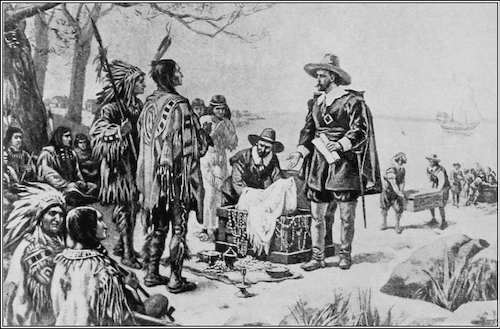Long before European settlers arrived, Indigenous nations thrived across the land that became the American colonies. These communities had their own governments, economies, cultures, and spiritual traditions. As colonization expanded, Indigenous people faced displacement, conflict, and change—but they also adapted, resisted, and remained central to colonial life.
Daily Life and Responsibilities
Daily life for Indigenous people varied by region, but many communities practiced seasonal farming, hunting, fishing, and gathering. Women often grew crops like corn, beans, and squash, while men hunted and fished. Elders shared oral histories and spiritual knowledge, and children learned through participation in community life. Trade networks connected tribes and later linked them to European settlements. Some Indigenous people engaged in diplomacy with colonial leaders or participated in trade by exchanging furs, food, or crafted goods.
Limitations and Challenges
Colonial expansion disrupted Indigenous life. Settlers took land through treaties, war, or outright seizure. Some Native people were forced to move west, while others saw their communities destroyed by violence or disease. European laws did not recognize Indigenous sovereignty, and colonial governments often refused to treat Native nations as equals. As missions and settlements grew, some Indigenous people were pressured to convert to Christianity or adopt European ways of life, often losing cultural practices in the process.

Contributions to Colonial Society
Despite these challenges, Indigenous people played critical roles in colonial history. They shared knowledge about local plants, geography, and survival that helped settlers live through their first winters. Native leaders negotiated treaties and formed alliances that shaped wars and borders. Indigenous agricultural techniques, technologies, and place names became woven into colonial life. Through resilience, adaptation, and cultural preservation, Native communities continued to shape the land and society they had called home for generations.
